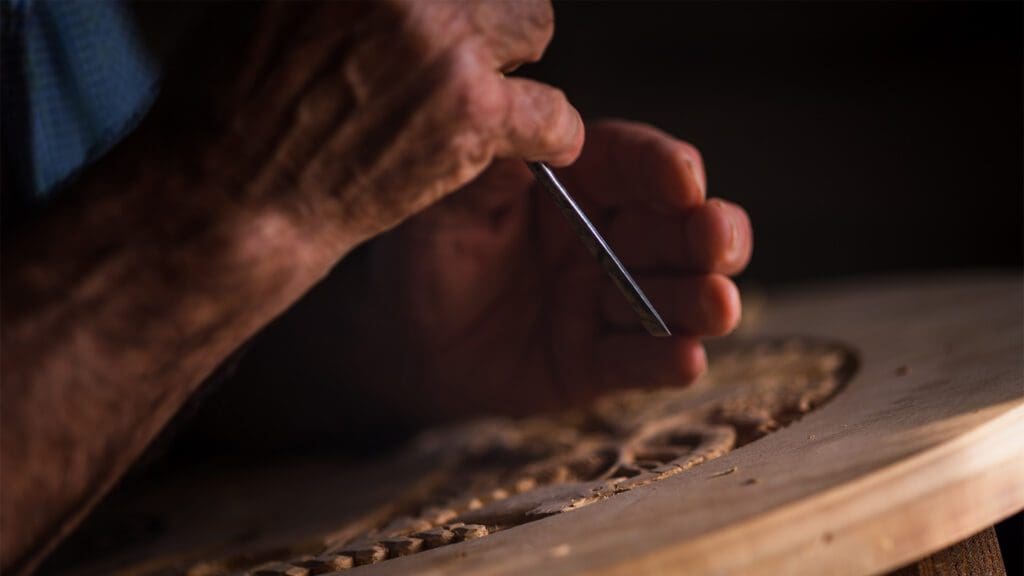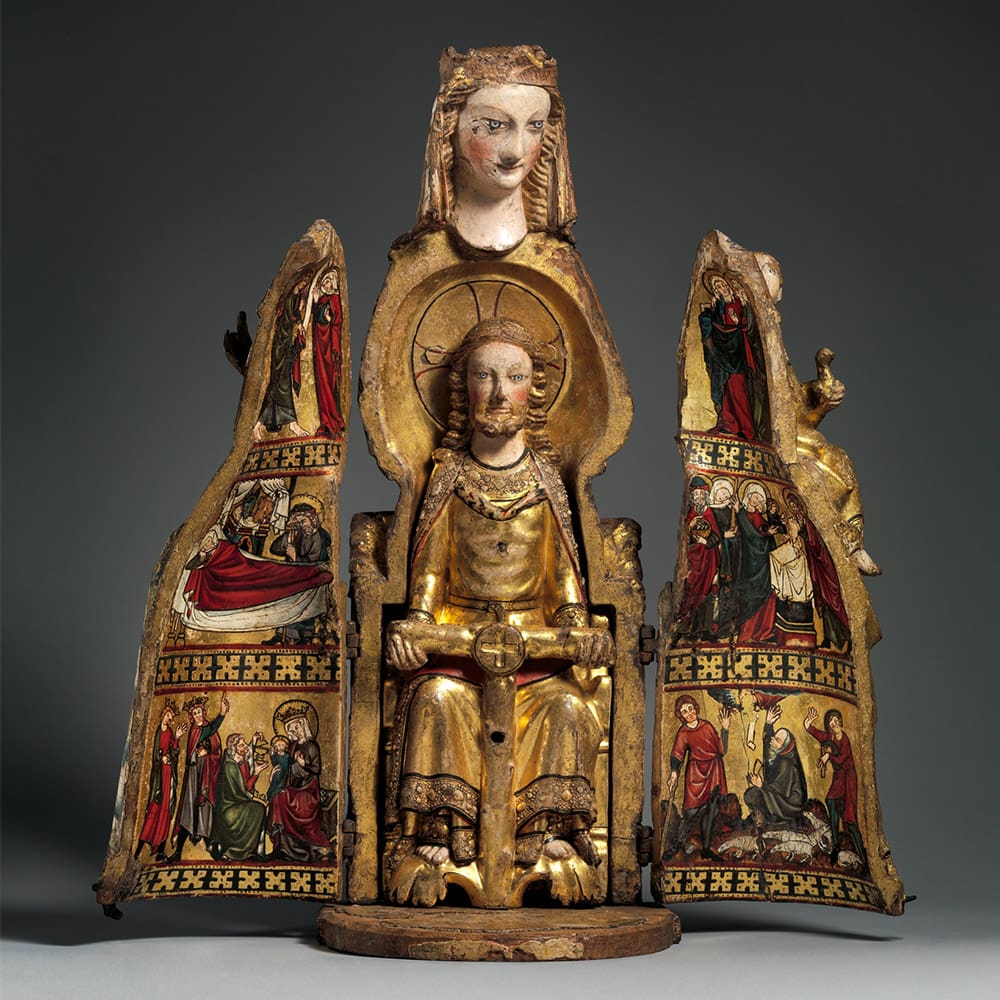T
The beguines were next. After three years in Berlin, where I befriended Dietrich Bonhoeffer, we had moved to Belgium, and I found my attention turning. The beguines were an organic movement of unmarried lay religious women who, beginning in the twelfth century, created communities of common life in contemplative service to God and active service in the world across Western Europe. They refused to live as though marriage or monastery were the only places of purpose and belonging for women. Centuries before he called for it, these women inaugurated a kind of new monasticism that Bonhoeffer would yearn to see renewed in modern times. Thus the beguines seemed natural partners to the conversation I had begun with Bonhoeffer on civic housekeeping and political love, embodying practices still sorely needed and deeply undervalued today. But unlike Bonhoeffer, there was no single place, no one singular person, with whom I could begin with the beguines.
Like a flock of rare birds, they had caught my attention as we settled into a linguistically flexible commune east of Brussels. Beguine dwellings peppered maps (béguinages in French, or begijnhofs in Dutch), which our Lonely Planet guidebook described as “enclosed semireligious subvillages,” an awkward rendering. On a visit to Leuven’s Groot Begijnhof, a restored complex that once housed a group of three hundred beguines, I passed through the gated entrance to the tranquility inside. The tourist information sign, I noticed, called the beguines “widows and spinsters,” the latter an epithet tinged with barren irrelevance. But the graceful lanes of that miniature polis, now offering shelter and beauty to Leuven’s university community, give architectural evidence of a far more significant historical footprint.
“They were the first religious movement by women for women,” Erin Risch Zoutendam, a Duke University PhD candidate in religion, told me. A scholar of medieval female biblical hermeneutics, Zoutendam says that “as a historian, I don’t have a ‘but actually’ for the beguines. When I teach on the beguines, my students are astounded by their movement, and I am too. The interest people have in the beguines is well born out.”
The beguines refused to live as though marriage or monastery were the only places of purpose and belonging for women.
Like the term “Christian” at Antioch, “beguine” was coined in derision, and its etymological origin has been fiercely debated over time. It may have meant “stammering” or “murmuring.” The women against whom it was uttered adopted the term as part of their way of life, and the way they lived redeemed its mocking meaning. “They embraced the derisive term ‘beguine’ as part of their embrace of self-abnegation,” observes Tanya Stabler Miller, an associate professor of history at Loyola University Chicago. “They turned that term into a justification for their mission. They weren’t marginal, but they could pose as marginal. The derision offered them some protection to their way of life, a dynamic often overlooked in scholarship.”
Author of The Beguines of Medieval Paris, Miller’s personal interest in the experiences of medieval women as an undergraduate propelled her toward the beguines. Although she was first attracted to what looked like devout women finding religious loopholes in oppressive patriarchal rules, her research propelled her to see beguines as living out a more complex witness—a more flexible, dynamic, and also demanding way of life, one that some priests and theologians in that era respected. Digging through tax rolls and old sermons to discern traces of these women in archives, Miller’s study of Robert of Sorbon, a Parisian theologian, secular cleric, and close friend of Louis IX, proved central to her understanding of the beguines’ powerful witness at a time of great religious ferment and yearning for reform.

“Sorbon,” Miller says, “held up the beguines as models to his [male] students, precisely because the beguines embraced that term. They were women for the men to emulate. ‘Beguine’ was part of their ‘brand.’ Sorbon saw them choosing a humble, non-institutional path, full of public mockery and social rejection, and living out an ordo caritas, not an order of man-made rules but one of love for God and neighbour.” Despite having no marked esteem for the spiritual lives of women, Robert of Sorbon nonetheless lifted up the beguines as models for these men to contemplate.
The beguines’ beginnings merit phenomenological language. It is fitting to say that lay religious women (mulieres religiosae) began to appear, for that is what they did, “organically and seemingly spontaneously,” Miller writes, in the late twelfth century in parts of the Netherlands, Belgium, France, and Germany. To say “movement,” again, risks distortion, as if there was some hidden organizing hand. They appeared here and there, without formal strategy or any kind of central leadership. That they appeared did not go unnoticed, nor was it alien to an era of immense religious experimentation and hunger for reform among clergy and laity alike.
Alone, in pairs, or in small clusters, single and widowed women charted a course of life that didn’t exist in the religious or social imaginary for women (the available two being marriage or monastery). They did so with no mind to unseat or threaten the institutional church, but were often still met with suspicion, scrutiny, and downright hostility. The women had their own real human needs. Some of the beguines were fleeing coercion into miserable marriages. For others, the convents had no room for them. Widowed beguines found safety, security, and provision within beguine communities, as well as peaceable purpose in service. All of them risked serious breaks with families, and social and ecclesial expectations. But some clergy came to see them as essential spiritual friends and leaders, and it was clear they were meeting real needs in the world, theirs and others.
These rivulets of lay religious commitment began to form into real rivers of belonging. Pockets of beguines soon became small polities, even if these women could only be adjacent to the urban centres to which they were drawn. Whether single or widowed, beguines took simple—not solemn—vows, promising to a bishop or clergyman to live chastely, obediently, and to observe at least a qualified form of poverty. Beguines did not beg or receive alms as part of their way of life, as mendicants did. In the main they worked for pay and earned money through manual labour. At times, they gave reigning textile guilds a run for their money. They were open to serving the vulnerable poor who came to them for help, including fellow beguines.
Around 1230, even as suspicion about them grew, the beguines began to accumulate property, often in less desirable areas just outside a city, but property nonetheless. They maintained a self-governing communal order at their various convent-like homes and city-like dwellings, and one of their own served as grand dame to provide oversight. Many beguine communities elected to be taxed by the civil magistrates rather than submit to ecclesial oversight, a practiced marginality that allowed them to protect their unique form of independence. For a time, they held real ground that no one knew existed or even could exist by and for women. Exact census-like numbers are impossible to calculate, but it is possible that, at the peak of the movement, there may have been as many as one million beguines across Europe.
Literacy, Prayer, and Structures of Care
My awareness of the beguines on the historical map was barely a whisper prior to moving to Belgium. I remembered reading an Economist obituary of “the last Beguine,” Marcella Pattyn, who died at the age of ninety-two in Kortrijk, Belgium, in April 2013. I cannot recall any serious mention of them in a church history class, much less in theology or political theory courses I had taken. This almost studied forgetfulness of this movement of women touched a deep inner nerve in me. When they had been mentioned, it was a glancing acknowledgement. The beguines captured my attention because, as a woman, I could more easily imagine their lived realities, especially in church settings where women’s contributions are so often taken for granted, and where women’s vocations are so often subsumed into men’s, or are met with suspicion not collaboration. Our world so heavily depends on and reliably, even ruthlessly, undervalues whoever performs what has long been called “women’s work”—caring, teaching, cleaning, tending, nursing, feeding, and comforting. The beguines merit more than just a perfunctory “women and heretics” paragraph in our moral imaginations.
Walter Simons’s magisterial study Cities of Ladies: Beguine Communities in the Medieval Low Countries, 1200–1565 offers a welcome corrective. Exactly half of Simons’s book is documentation: a treasure trove of endnotes and appendices, teeming with critical minutiae, obscure and arcane, that manifests immense intellectual labours. Out of those painstaking details Simons paints a fuller, electrifying picture of the beguines and their situation. His analysis is punctuated with exasperation, too, at the narrative and archival sins of earlier historical efforts. Simons laments the impoverished records about beguines, their elided existence from archival consciousness. He is baffled by officious ecclesiastical accounts that credit renewals to charismatic leaders, obscuring the role of lay women and men.
Moreover, the beguines do not appear ex nihilo. Simons notes that the populations of medieval northern Europe, especially the middle and upper classes, prized literacy. These families tended to teach both their sons and their daughters how to read—“they certainly taught them numeracy,” Miller stressed to me. The middle-class presumption was that the daughters would also be proficient in managing family businesses, thus meriting educational investment. Visitors from southern European regions found it disconcerting that northern women could hold forth intelligently “like wise doctors.” Those women also tended to delay marriage longer, well into their mid-twenties, and when they married, they married men of relatively equal age. Women of lower classes also tended to move to cities more than men because they sought employment where they could, whether as household maids or nannies, or in the textile industry or in hospitals. And women conducted business in urban market squares, even if, Simons cautions, “they could never call these spaces theirs.”
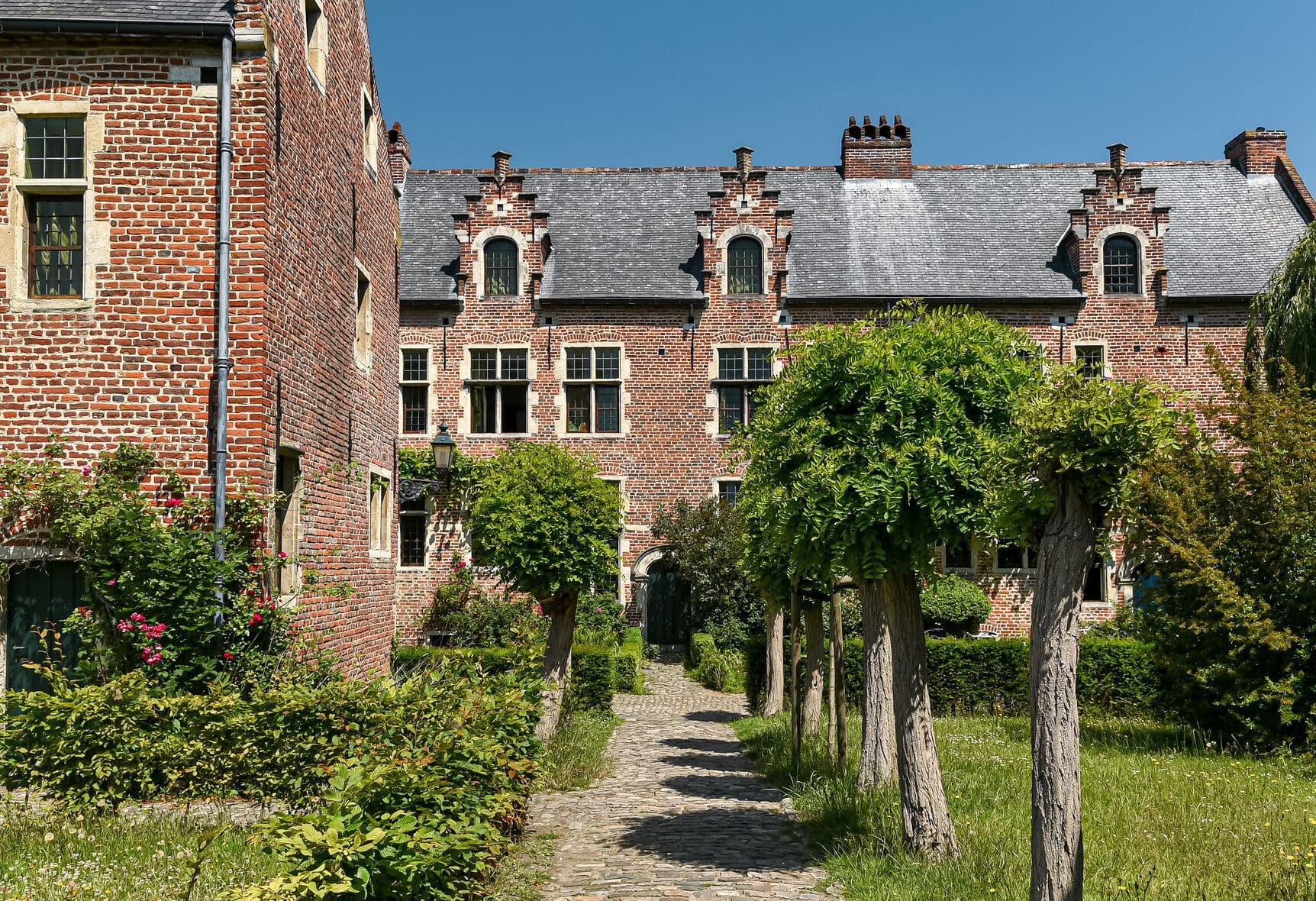
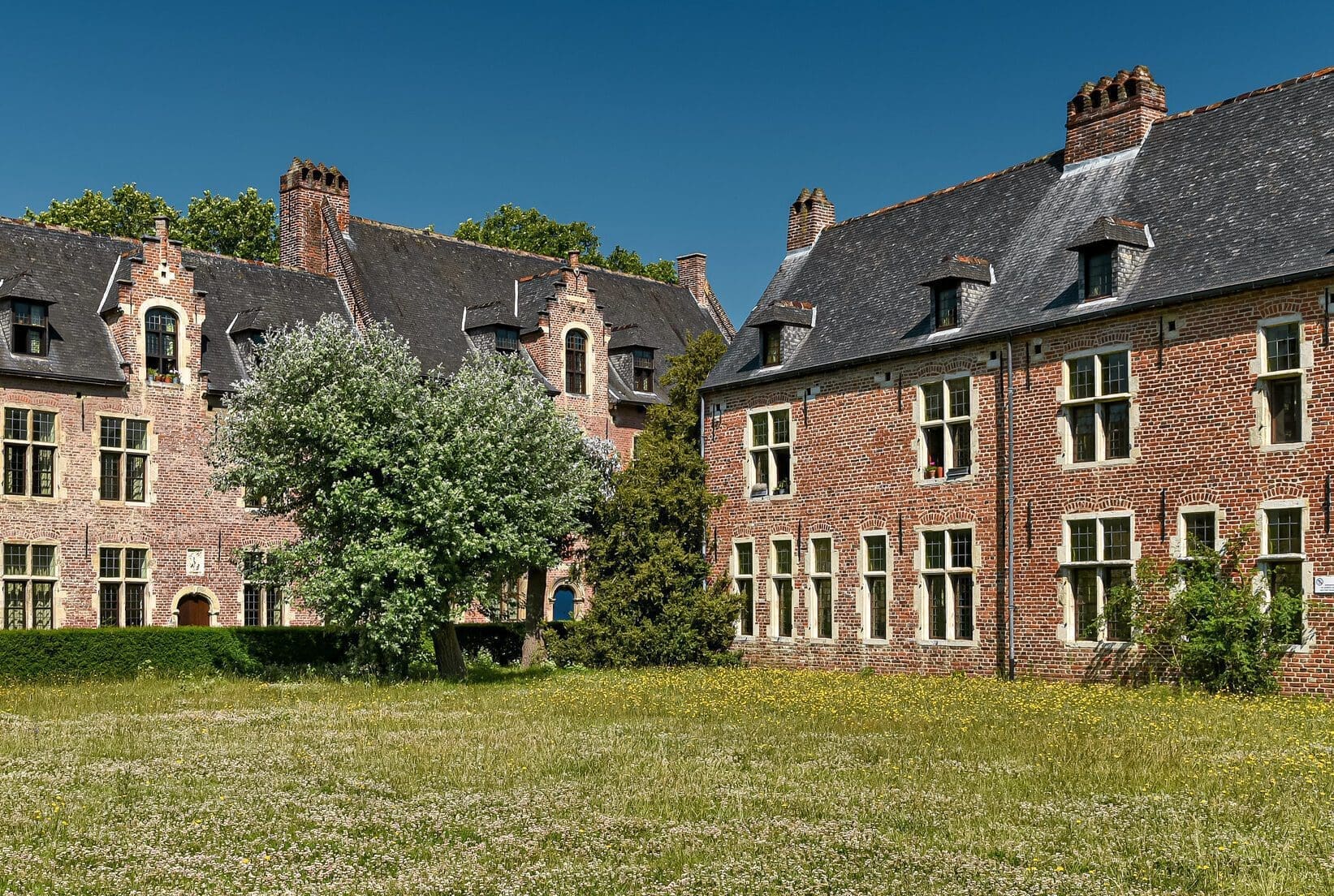
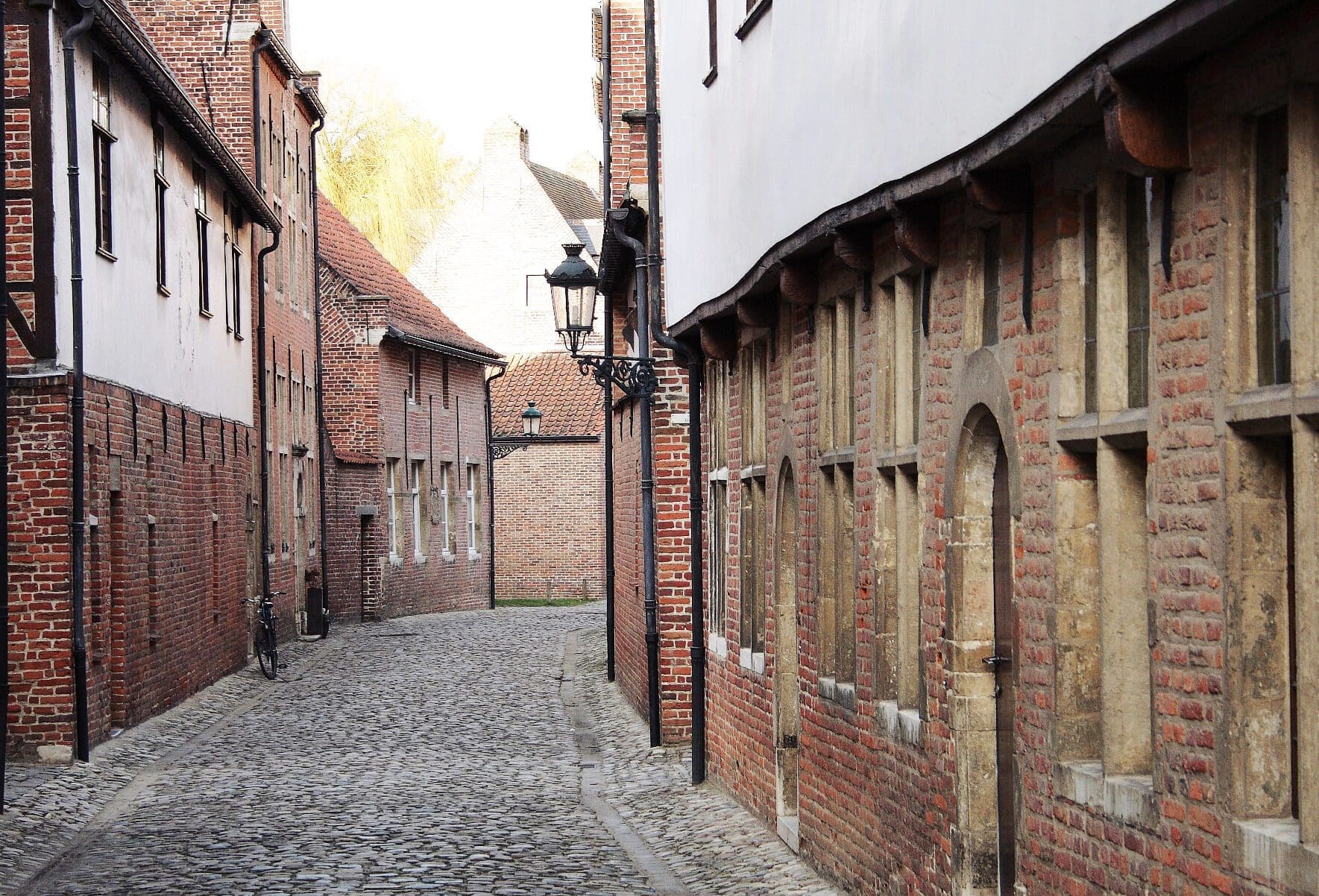
As I learned more about the beguines, my astonishment that they existed at all only grew. Hiking the Tours de Quatres Chênes—Four Oaks Hike—which begins near the medieval Villers Abbey, I imagined them criss-crossing the same verdant fields and rustic pathways. Founded in 1146, Villers Abbey now lies in ruins, but the monks who once lived there admired and spiritually supported local beguines. In 1175, they had correspondence with the famous abbess Hildegard of Bingen, and after that they seemed to take a particular interest in the spiritual lives of religious women, offering them friendship and recognition in writings. One of them, a Cistercian named Goswin of Bossut, penned the Life of Ida of Nivelles (d. 1231) along with other anonymous authors who inscribed other beguines’ vitae. Ida is one of the earliest names identified as a beguine. There are many named others—Hadewijch, Beatrice, and Mechtilde stand out prominently among them—but we still know so few.
Before Ida, another girl from Nivelles, named Mary, began ministering with her husband to the lepers of nearby Willambroux. She eventually became a recluse in the town of Oignies. Mary of Oignies’s vita was written in 1215 by James of Vitry, who first heard of Mary’s reputation as a student in Paris, and he travelled to the Namur region to learn from her and be influenced by her life. James beseeched Pope Honorius III for his oral approval of the beguines, which he gave, although because it was never formalized it is unclear how much good it did. Without these male friends, there would be far fewer source materials from which to learn about their lives, but not none. For although these religious women were not strategically seeking to build institutions or lay down an archive that might secure their historical legacy, they did build and some did write. Many more of them read, prayed, and worked. Across the fields of the Nivelles-Oignies countryside, in the landscapes of Liège and so many other locales, religious women and men spurred one another on in piety and practice and in service to the poor.
One name regularly invoked in beguine lore is that of St. Lambert le Bègue, who was ordained a priest in 1146 in the diocese of Liège, incurred the nickname li beges because he stuttered, yet was outspoken against clergy who lived off the fat of their authority over the laity. As a priest, Lambert showed great care to the laypeople he served, including women, and he translated Scripture and other devotional materials and wrote religious tracts for their use and study. These activities opened him up to charges—that is, charges that went to trial—of blurring the boundaries of authority between clergy and laity with sectarianism.
Lambert’s name as a titular founder of the beguines (as followers of li beges) lacks evidence, although he has been named the male figurehead of the beguinal movement for centuries. Simons stresses that Lambert’s more significant role was in tending to lay literacy. Lay literacy deeply nourished lay prayer and devout activity in the world, several hundred years before the arrival of Martin Luther on the scene. A key feature of beguine depictions in art and statuary is a girdle book, a book hanging from their belts. Indeed, priests like Lambert cultivated what Simons suggested could be called “communities of readers” or “textual communities,” ones that also reverberated with prayer. That pattern grabbed my attention in Bonhoeffer’s life as well, for he, too, saw the fervent need for scriptural engagement and contemplation, and for recovering the Psalms as prayers.
As much as they dared, by which I also mean served, they built and managed small cities themselves, and thus stand to be counted among history’s civic, even political, housekeepers as well, despite lacking much of an archive, despite being considered external to the structures of the polis.
Those prayers were integral to their work. The beguines offered practical care for vulnerable human bodies—cleaning, feeding, sheltering, teaching, all the work of health care, hospice, caring for the bereaved, for the preyed on and the exploited, and tending to and educating children. They were particularly known in their care for the dying and the dead, which likely contributed to their social stigma. They couldn’t do that kind of world-facing work as nuns enclosed in convents, nor very easily as wives and mothers in large families. But as beguines, they could. Their simple vows kept them free in many ways. It’s not a minor point, says Miller. “If you are free to leave, it’s amazing that you stay.”
That freedom eventually met confrontation. The beguine movement was condemned at the Council of Vienne (1311–12) for heresy. The first decree, Cum de Quibusdam Mulieribus, was more moderate, and tried to distinguish between faithful and unorthodox beguines, managing both to condemn and yet still permit beguine life to exist. The second, Ad nostrum, issued a more severe and wholesale condemnation. Admittedly, there were heretical movements afoot, chief among them the Gnostic Cathars, whose dualism the beguines rejected in practice as evidenced by their attentive care for human bodies. But as Yale historical theologian Denys Turner points out in an essay on Marguerite Porete in God, Mystery, and Mystification, the second decree was more like the birth certificate of a heresy that showed little signs of actually existing. In his estimation, Marguerite Porete—another prominently named “one-time beguine,” at least according to the records of her execution in Paris in 1310—was likely burned to death as a way of killing two suspicious birds with one fiery stake: one, a heretical movement called the Brethren of the Free Spirit, which lacked books to burn, and the other, the unregulated, overly independent beguines. Both Marguerite’s book, The Mirror of Simple Souls, and her body were burned for that purpose, even though her teachings were largely orthodox, just regrettably penned by an insufficiently submissive, authorized female. There emerged “German beguine hunters” around Cologne and Strasburg following the papal condemnation who were so ruthless that even some unsympathetic church leaders issued calls for restraint.

The beguines met both hard and soft persecutions from Catholics, Protestants, and secular sources alike, all contributing to their slow demise. The rise of Continental tourism in the late nineteenth century helped rescue more substantial beguine structures from further ruin (and some now are protected UNESCO World Heritage sites), but also threatened them softly with nostalgia. For the beguines were not merely doily-makers living a simple lifestyle. Theirs was a spiritually, emotionally, and physically demanding one, and met real human needs. As much as they dared, by which I also mean served, they built and managed small cities themselves, and thus stand to be counted among history’s civic, even political, housekeepers as well, despite lacking much of an archive, despite being considered external to the structures of the polis.
Marginal Birds
The beguines tugged at my heart and mind just as much as the birds, to which I drew my young son’s attention as well from our new Belgian perch. Even before the pandemic I found immense comfort sighting the European familiars that I had come to know in Berlin—the tuxedoed magpies, the tan-suited jays with their blue cummerbunds, the various little titmice darting into our massive hedge. My son and I were particularly keen to spot peregrine falcons on the steeples of old churches.
Kenn Kaufman’s essay about female birds fit my anguish about the beguines. He reflects on how the traditional habits of birding led him into a deep, blinding bias for the males of species. At the tender age of six, the same age as my son when I first read it, Kaufman’s young love for birds carried not a whiff of prejudice within it. It was just easier for him to see the bright red male northern cardinals. But he now acknowledges that habit—something we might call an imaginative algorithm—bound his sight and even his knowing. Without conscious effort, as a teen, he practiced painting the bright plumage of the male birds. When he did sight a female of a species, he did so mostly to confirm that the male—the actual catch, the quintessential bird—was not far off.
It was only when Kaufman grew as a birder that, paradoxically, the actual practices of birding led him out of his early and unconscious habits of biased birding. Growing as a birder meant growing more attentive to actual phenomena, to the deeper realities and structures that constitute what we might call bird culture and society. When he began to learn birds as lives with story, shape, and relationship, Kaufman could not keep ignoring the females. The most obvious (“mansplainy”) modes of identification began to give way to more subtle forms of seeing, revealing a far more fascinating, denser landscape of relationship. He began to see better and to see all the birds better, appreciating their distinctive quirks, skills, and powers. As he puts it, “If there’s a whole world of birds out there, it would be strange to ignore half of them, wouldn’t it?”
In perhaps the only archival footprint of how my beguine fascinations have quietly whispered to others, Jen Pollock Michel mentions in her most recent book, In Good Time, conversing with me about the beguines in the back-and-forth of our long-distance friendship. Having long wrestled over vocational questions, particularly divine tugs toward writing in addition to mothering and neighbouring, she laments the lack of “richly diverse examples of the variety of faithful lives women might offer to God in the world” in her years growing up. It is vital to say, with the beguines in mind, that it is not because historical models aren’t there that she lacked them. She writes about finding strange hope peering onto a digital page of Lambert’s Psalter, seeing birds “perched along the script that flowers into the margins,” a reminder that in God’s economy, there are no marginal birds like there are too often in man’s.
Our too-brief tenure in Belgium, overshadowed as it was by the COVID-19 pandemic and by political turmoil back home, did not allow me to enter more deeply into a conversation with the beguines like I had with Bonhoeffer. But I see now that that would be like trying to converse with a murmuration of starlings. In truth Bonhoeffer and the beguines seem to me like distant saintly siblings. We reflect on lives like Bonhoeffer’s, as Oliver O’Donovan said in a 2007 lecture, not to imitate them, but so that they might “be loved for what they are, and to be taken as material for understanding what kinds of things God accomplishes in human action and lives.” This is how I receive the witness of the beguines, through whom God accomplished mighty knowns and unknowns. Sighting them has helped me to see the women and men I know in a different light entirely, as well as the places still worth investing in, possibilities for what renewals may appear, and by whom. Mostly, seeing all human beings as much less marginal birds.




